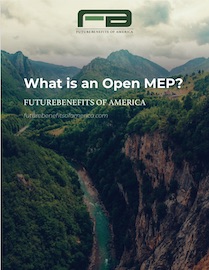Background: When the 401(k) system started, there were no assets in the funds. Retail mutual funds were the only investment vehicles available to take small contributions. Now, however, things have dramatically changed. The 401(k) system is vast and
Bottom Line: In this ever-expanding world of options in 401(k) plans, we make the case for reintroducing fully institutional investment management. While not possible in the past, new technologies have now made this possible, economic, and efficient.
Furthermore, we propose that now is the time for institutional money management to be made available to all sizes of 401(k) plans.
Change is Good—Maybe
We see that the majority of articles say that education is what is needed most for the participant.
- Most people that invest in a retirement plan are just average folks that are trying to make preparations for their future.
- They work a full time job.
- They come home and spend time with their families.
- Maybe they coach their kid’s team or do yard work or other daily things that require their attention.
Do they really have time to dig through various amounts of information to try to decide whether they should diversify in the Pacific Rim or stay in domestic funds? For that matter, does the average advisor have the time to analyze all the different investment options that are available and make a proper decision of what should be offered and service the clients they have?
The answer is No!
Is it wrong to offer more education? The answer is also—No!
Back in the 1980s, when I started in the field of 401k plan administration, we did not have all these different investment opportunities and options. Frankly, no one expected 401(k) plans to be much of a success and balances and contributions were very small. 401k plans ran a long second place to defined benefit plans at that point in time. There were a lot fewer choices.
- Most of the fund options were limited to one mutual fund family, a group annuity or pooled funds from a bank trust department.
- A large majority of the plans were not participant directed, but balance forward plans that were valued once a year.
- A large number of the plans were directed by the trustee to an investment company pooled account. The majority were investment models, managed by advisors without the options available today. Professional money management was only for the large corporate accounts. It was too costly for the average plan.
Boy, have things changed! Defined contribution assets are estimated to be north or $7 trillion and growing at a steady rate thanks to payroll deduction, while defined benefit plans are in the backseat now.
So by now maybe you are asking where I am going with this. Here you go: In the evolution of plans, we have truly come back to the need for professional money management. What is new, different and better now is that professional money management is affordable for the small plan now.
Advisors Needed—Bringing Institutional Management Back to 401(k) Plans
Now, with the different technology applications, they can be made available as fund options within a 401k plan.
Money managers, and some talented advisors, can create their own fund models that are managed daily and offer them as options within the 401k plan. The advisor has the ability to choose from several different institutional managers and can mix and match their professional management with a la carte funds if so desired for those who still want the options. This automation allows a greater option for the participant who does not have the time to sift through all the educational material. It provides a way for an investment advisor to analyze the professional money manager and their expertise, instead of sorting through 20,000 fund options.
In addition to these options, most money managers will act as a full ERISA 3(38) fiduciary over their models. So, we have come back to the earlier days of pooled accounts within the daily environment. It is the best of both worlds.
The question then becomes, is it possible to do this in our current retirement plan environment. This time the answer is Yes! The technologies and relationships are available on many different platforms. Many open architecture platforms have the ability to maintain multiple relationships with money managers. Many professional plan administrators, like ourselves, have minimal limitations to placing these pieces together.
In summary, a Registered Investment Advisor can choose an ERISA 3(38) fiduciary to act as money manager of the investments. The RIA can be the advisor for the sponsor in offering assistance and can also offer a la carte funds to the menu as needed. The Third Party Advisor that offers these capabilities provides the platform, processing, and testing—all bundled into a nice neat package.
It is not limited to the RIA. A registered representative of a
We here at FutureBenefits of America know this industry. Let us know if we can help you offer these services.


